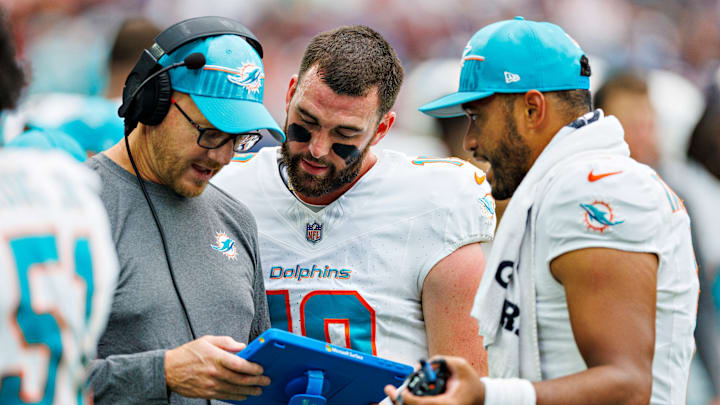This past Saturday, the Dolphins faced the Houstons Texans in their second game of the preseason. With some of their starters available, Miami took advantage of a team on the rebuild, beating the Texans 28-3 at NRG Stadium. Aside from a few early misplays, starting quarterback Tua Tagovailoa was efficient. He led the offense on a 95 yard scoring drive, passing for 61 yards on 6 attempts.
We saw snapshots of a defense on the rise. Vic Fangio’s unit kept Stroud and company out of the end zone, allowing their opponents only 186 total yards on 48 plays. New recruit David Long joined in on the fun, tackling running back Dameon Pierce in the backfield for a 3 yard loss.
The Dolphins led the Texans in most statistical categories. Their third down efficiency, time of possession and yards per play numbers were significantly better. They even managed to concede less penalties- a marginal improvement from last’s games total but an improvement nonetheless.
Sifting through all these numbers, there is one stat that stands out: the run-pass ratio.
Miami ended the game with 29 passing attempts and 38 rushes (3 of which were QB runs). They collected 200 yards on the ground while throwing for a similar amount. A way more balanced approach compared to their short history in an McDaniel led offense. Last year, Miami was 31st in rushing attempts with 390. They also finished 26th in total rushing yards with 1686. Those totals average out to roughly 99 yards on 23 attempts per game.
Against the Falcons, the Dolphins ran for 120 yards in first half. On Saturday they improved on that number with 140 yards in Houston. Miami’s official website was quick to point out that “It was the team’s most rushing yards in the first half of a preseason game since at least 2000.”
Despite it only being a 2 game sample size, these historically high preseason numbers show a concerted effort towards maintaining a run game. Running as early and as often as they did also shows a slight shift in approach. They aren’t just incorporating runs as a way to balance their attack, they are using the ground game to score points.
When asked about the ground game, McDaniel had this to say:
"You know, I think there's a lot of individual effort. There's inches in the game of football. Especially with a penetrating front like Houston has, you have to be on your P's and Q's, a lot of people have to execute things, and then people have to make plays when the opportunity is there. So, I think starting with the offensive line, the tight end group, and the receivers all blocked – and we had some ballcarriers make plays in tight windows. It's cool for guys to get rewarded for all the work that goes on unseen."
He is quick to point out how different components of the offense have to work in concert for the ground game to succeed. The effort of not only the offensive line, but the tight ends and wide receivers in running situations were evident throughout the game. McDaniel’s commentary along with those performances show signs of an offensive group committed to the run. This leads one to believe that future run-pass ratios will certainly fall more in line with what we just witnessed.
This style of offense certainly complements a quarterback who is making their way back from injury. At times Tua can be his own worst enemy, in an effort to carry the team he’ll try to extend plays which put him in harm’s way. Perhaps an effective running game will alleviate some of that self-imposed pressure.
Against Houston that pressure seemed non-existent. Despite an early interception, he stayed patient, made the necessary throws and leaned on his running game. The result: a 95 yard drive capped off with a touchdown.
